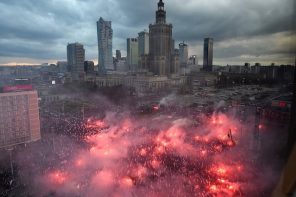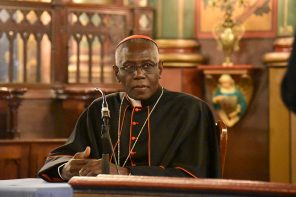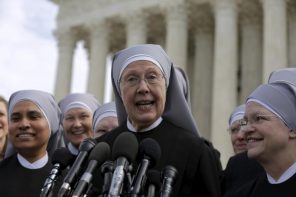Here in the United States—as we “celebrated” Columbus Day—the Catholic Church prepares to celebrate the Feast Day of the North American Martyrs on October 19. These two “celebrations” could not complement each other more perfectly.
About 150 years after Columbus “discovered” America and initiated the widespread genocide of indigenous people living in North America, eight Jesuit missionaries were killed during the wars between the Huron and Iroquois tribes in Canada and Upstate New York. They were: Jean de Brébeuf, Noël Chabanel, Antoine Daniel, Charles Garnier, René Goupil, Isaac Jogues, Jean de Lalande and Gabriel Lalemant.
Prior to their deaths, the missionaries were in the business of converting…
the Huron people to Catholicism. Unsurprisingly, many people of the Huron tribes did not trust them, while the people of the Iroquois tribes saw them as allies of the Huron and therefore enemies. Their deaths were imminent.
Just as Christopher Columbus is still hailed as a hero in the United States (except in Berkeley, California where they celebrate Indigenous Peoples’ Day), these eight missionaries are celebrated as the North American Martyrs in the Catholic tradition. Pope Pius XI canonized them as saints in 1930 and there’s even a National Shrine in their name in Auriesville, New York. They are collectively the patron saints of Canada.
Do they deserve such recognition and praise? Through their proselytization, these eight men were chipping away at the culture of the Huron people in the long tradition of US Catholic Church efforts to make Native Americans less “savage.” Until the late twentieth century, Catholic religious orders in the United States were known to “adopt” a Native American tribe and educate/indoctrinate the people of that tribe to help/force them conform to white culture.
These eight Jesuit priests were, no doubt, casualties of war, and we have to keep in mind that they were canonized in an entirely different historical and cultural moment, but what message is it sending to the wider Catholic Church if we continue to call these men martyrs—and even more, saints?




